Although Taijiquan is better known in the West as an excellent exercise that is very beneficial for health, especially for adults and senior citizens, Taijiquan was invented several hundred years ago as a martial art. It is still an excellent martial art. It emphasizes deflection, redirection of opponent’s force, utilization of opponent’s motion to get him off balance, strategic placement of body parts, and softness to overcome hardness. Advanced Taijiquan experts also use Qigong to increase their striking power and increase their capacity to absorb strikes.
In this article we discuss several basic martial applications of Taijiquan. We take several forms from the “Simplified Yang Style 24 Form,” which is often the first Taiji form set that is taught in an introductory course to Taijiquan. Even though these are forms from an introductory course, they can already illustrate the martial power of Taijiquan. For each form, there are multiple martial applications. In this article, we show only one or two martial applications for each form.
For illustration purposes, we have chosen the following eight forms:
- Opening Form
- Wild Horse Shakes Its Mane
- Step Back and Repulse the Monkey
- Roll Back component of Grasp the Sparrow’s Tail
- Single Whip
- Wave Hands Like Clouds
- Push Down and Stand on One Leg
- Picking Up Needle from Bottom of Ocean
In the following, we will denote the two people in the illustration photos by A and B. Person A (in black) is the attacking person, and person B (in light gray) is the person using Taiji to counter A’s attack. For each photo, you can click on the photo to get a larger-size photo. Then to return to the previous page, just click on the back-arrow button on your browser.
Opening Form
Application A: Attack from behind
| 1. Person A grasps B around the chest from behind |
 |
2. B raises both arms upward to break A’s hold around his chest |
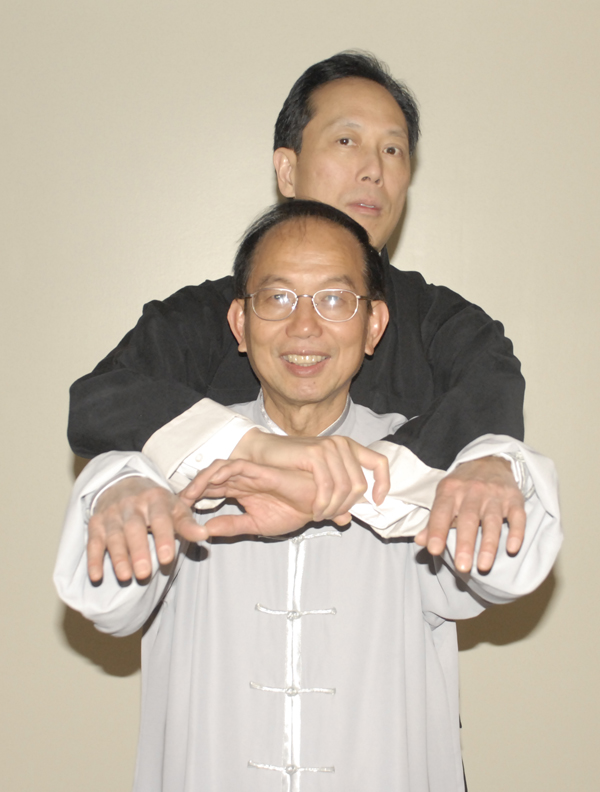 |
| 3. B bends his knees and drops down, and uses his hands to attack A’s groin area |
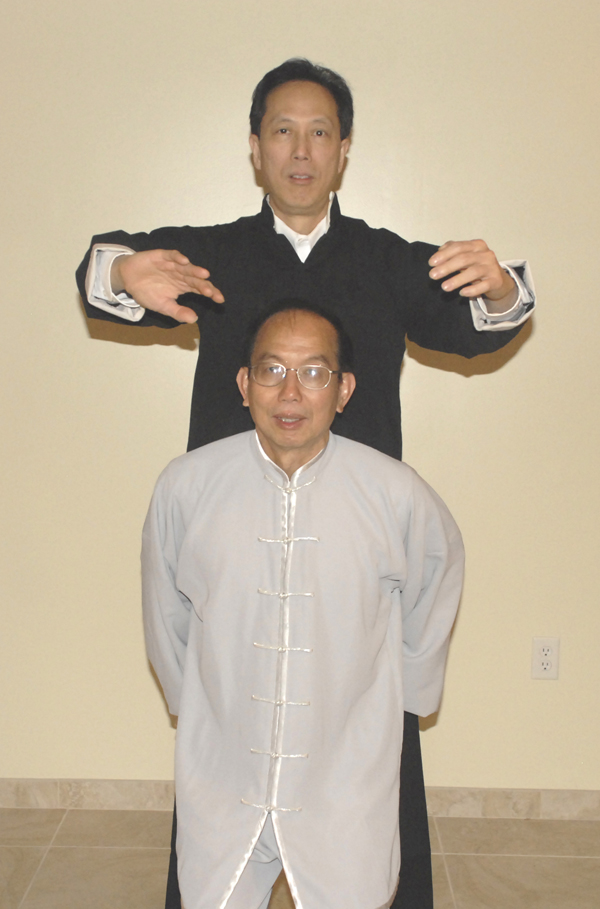 |
4. B can also use left or right heel to stomp on A’s foot, targeting the metatarsal bones (bones between toes and ankle), especially effective if wearing high heels |
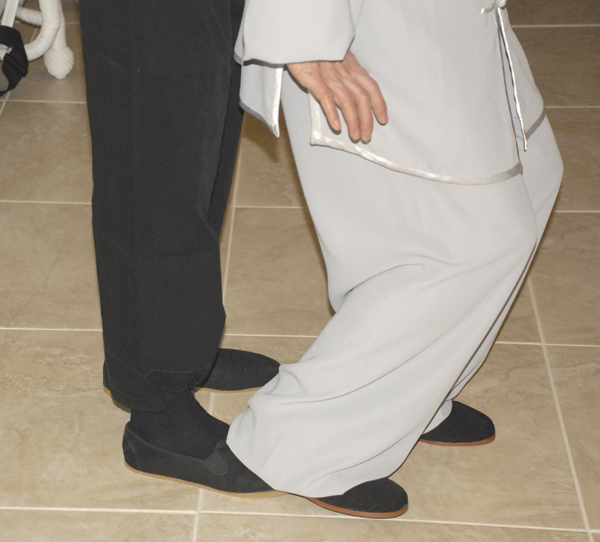 |
Application B: Attack from front
| 1. Person A grasps B’s neck or chest from front |
 |
2. B raises both arms upward to break A’s hold around his neck or chest |
 |
| 3. B drops both elbows and then pushes A’s chest with both arms, while stepping forward |
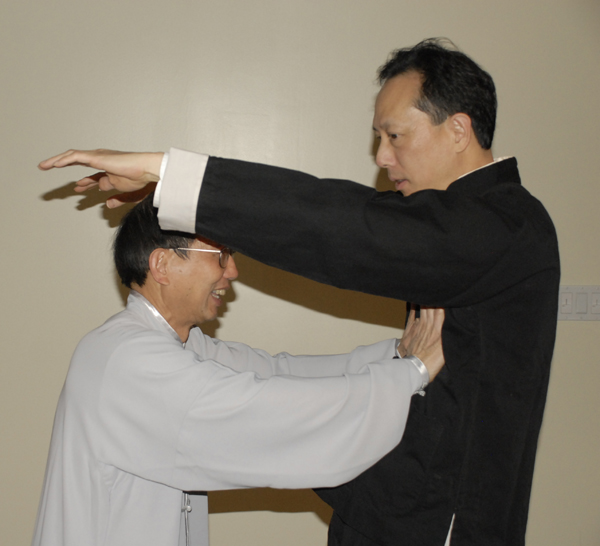 |
|
|
Wild Horse Shakes Its Mane
| 1. Person A tries to strike B on the chest with his right fist |
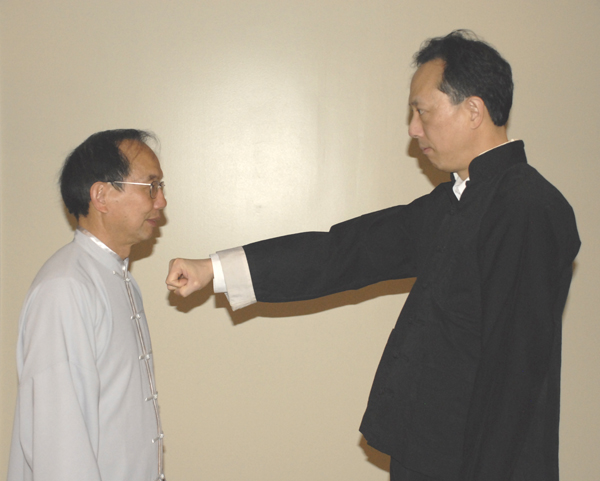 |
2. B turns body to right to avoid hit to chest, then sandwiches A’s right arm with his two arms, and also pulls A in direction he was moving, thus causing A to lose balance |
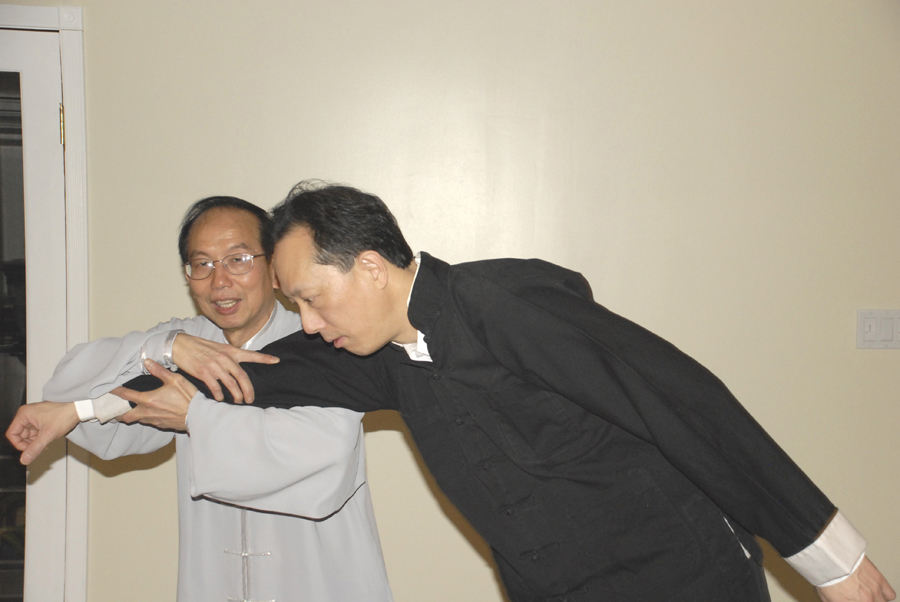 |
| 3. If A senses that he is losing balance and then pulls his right arm back and also moves backward, then B also changes direction. B takes step forward with his left foot to prevent A from easily moving backward or to B’s left, and at the same time moves his left arm (which is under A’s right arm) diagonally upward (and also slightly to left) toward A’s head while using his right hand to press B’s right arm downward. During this movement, B also rotates his waist from right to left to add more force to his counter attack. The end result is that A’s right arm is locked in an awkward and painful position, and A;s head and body are being pushed backward and to B’s left while B’s left foot traps A from moving in that direction |
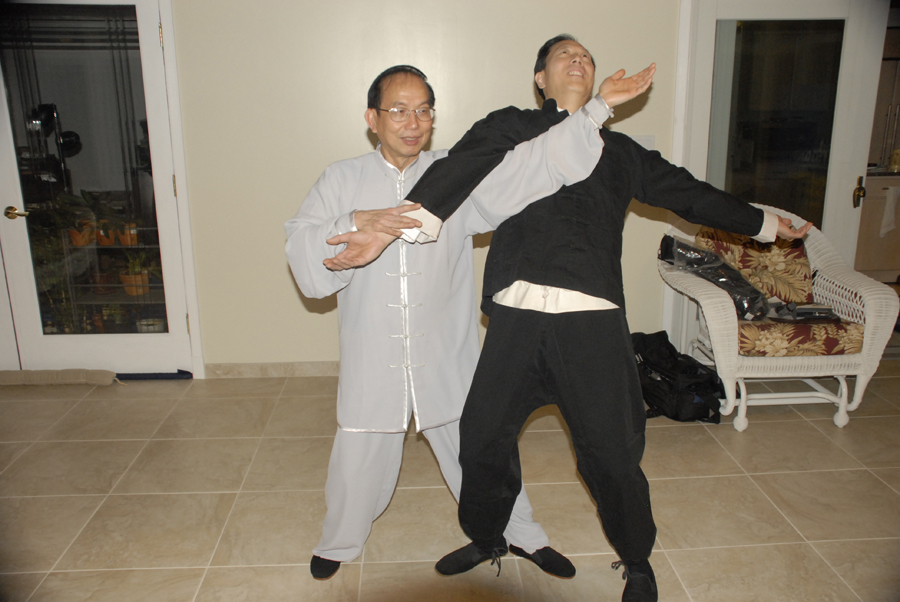 |
This form illustrates clearly the fundamental characteristics of Taijiquan which is captured by the Taiji symbol (see also the article “Yin-Yang Theory and Martial Applications of Tajiquan” in the Archived-Taiji page):
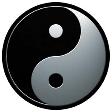
The fundamental characteristics are:
- B does not counter A’s attack with a direct frontal counter attack. Instead, B complements A’s motion by pulling A in the direction that he is already moving.
- When A changes direction, B also changes direction and now complements A’s motion in the opposite direction by pressing A in that direction.
Step Back and Repulse the Monkey
Application A:
| 1. Person A tries to punch B’s head with his right fist |
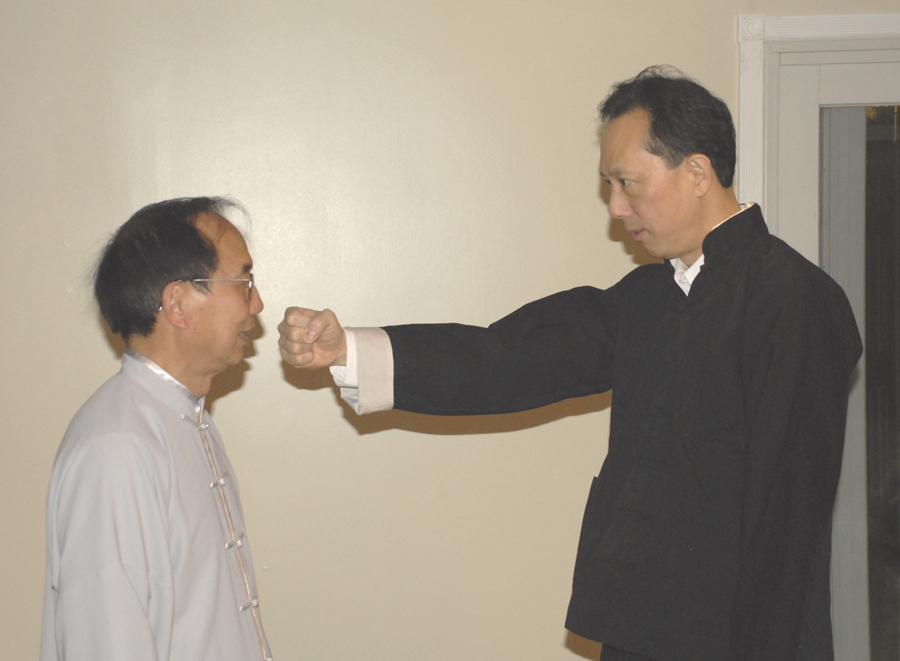 |
2. B raises left arm to block punch, and then turns his left hand to grasp A’s right wrist (not shown in photo) |
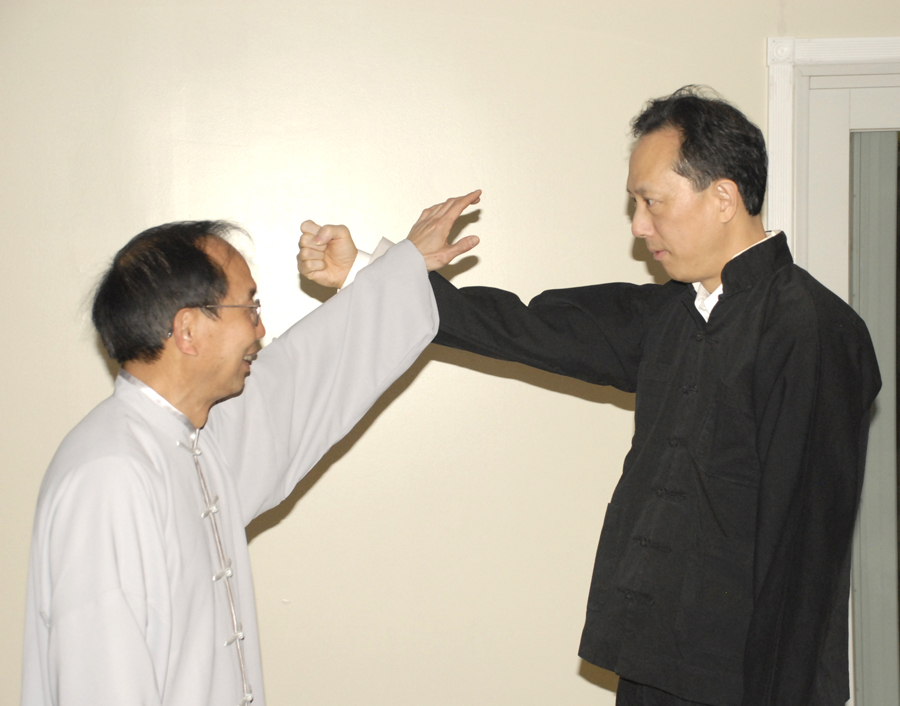 |
| 3. B pulls backward and downward while stepping back with his left foot, and simultaneously B strikes A’s head or neck with his right palm |
 |
|
|
Application B
| 1. Person A tries to punch B’s head with his right fist |
 |
2. B raises left arm to block punch, and then turns his left hand to grasp A’s right wrist (not shown in photo) |
 |
| 3. B pulls backward and downward while stepping back with his left foot, and simultaneously B presses down on A’s right forearm with his right forearm and drops A onto the floor |
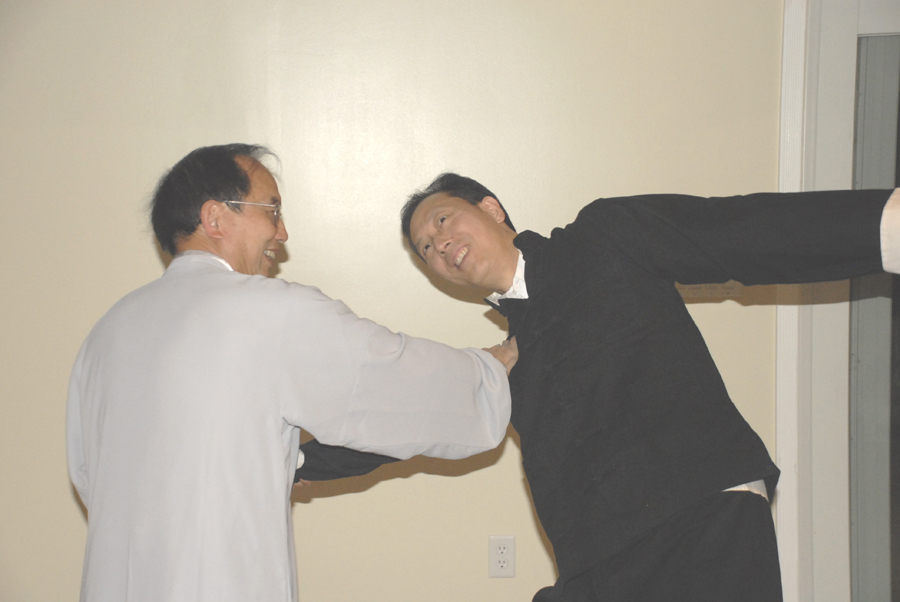 |
|
|
Roll Back Component of Grasp the Sparrow’s Tail
| 1. Person A pushes B’s chest with one or both hands |
 |
2. B rotates his waist and body from left to right to deflect and cause the push to glance off his chest |
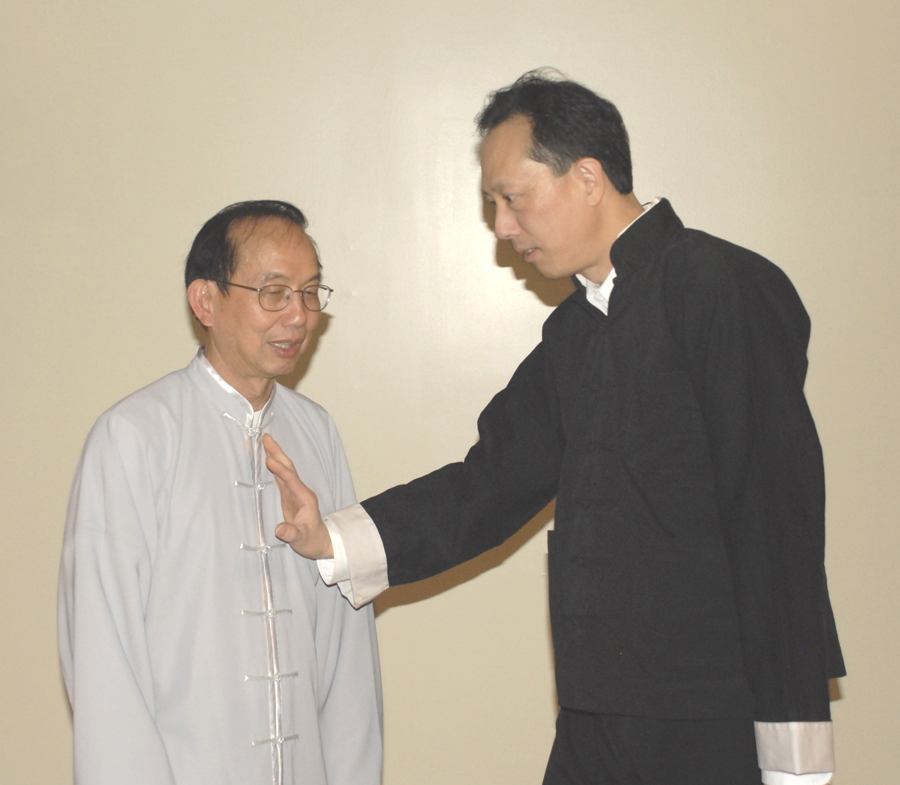 |
| 3. Continuing the rotation can cause A to lose balance |
 |
4. B can also use his hands to guide A’s hand to cause more unbalance for A |
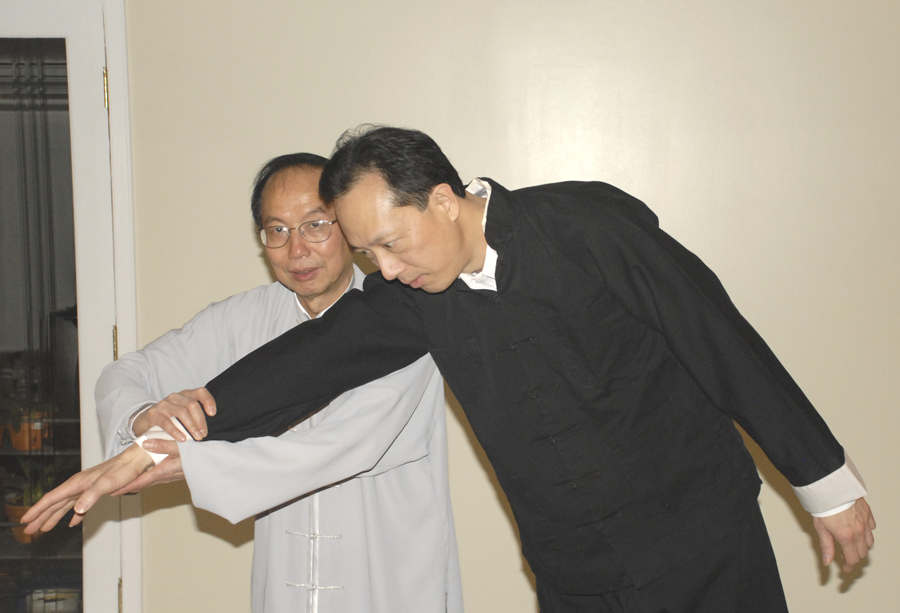 |
Since A’s pushing force is completely along the direction of A-B, even a slight force by B with a component perpendicular to the A-B direction will be able to deflect A’s push. This illustrates the Chinese saying “four ounces can deflect a thousand pounds.”
Single Whip
| 1. Person A tries to punch B’s head with his left fist. |
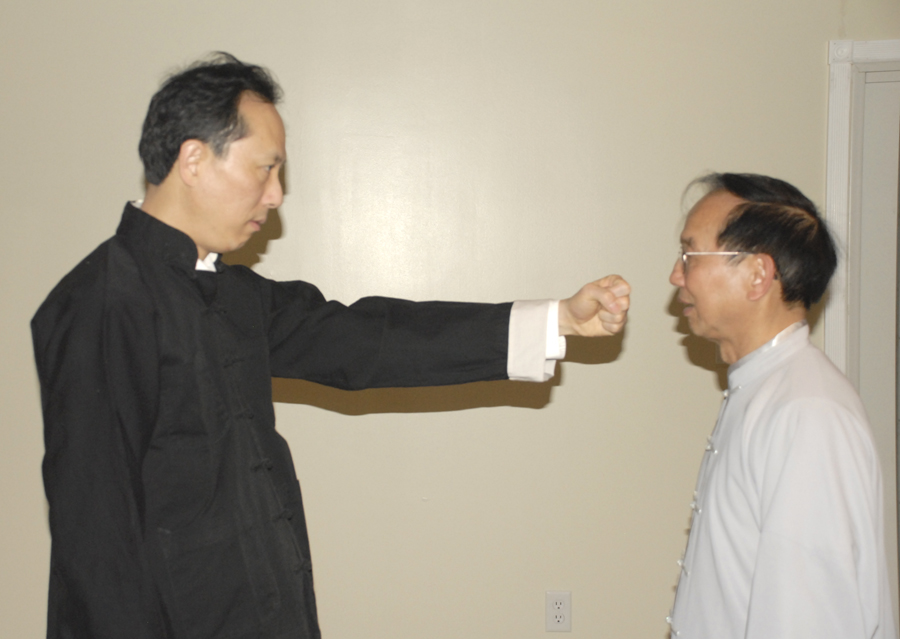 |
2. B raises his right arm to block the punch and then turns his right hand to grasp A’s left wrist |
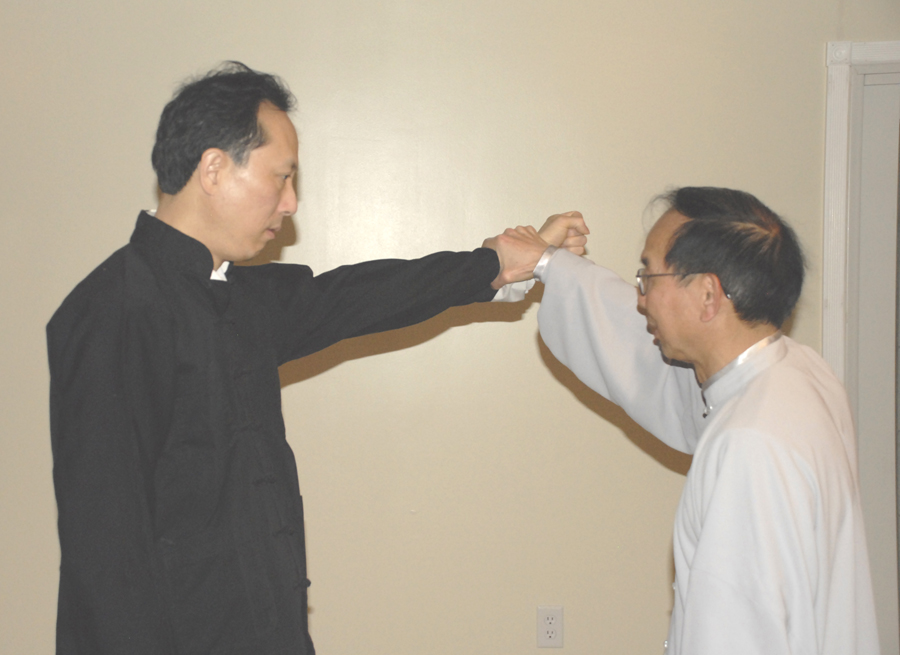 |
| 3. While pulling back with his right hand, B turns his body toward A and attacks A’s face with his left palm |
 |
|
|
Wave Hands Like Clouds
Application A: Blocking Punch from Above
| 1. Person A tries to attack B with a punch using his left (or right) fist |
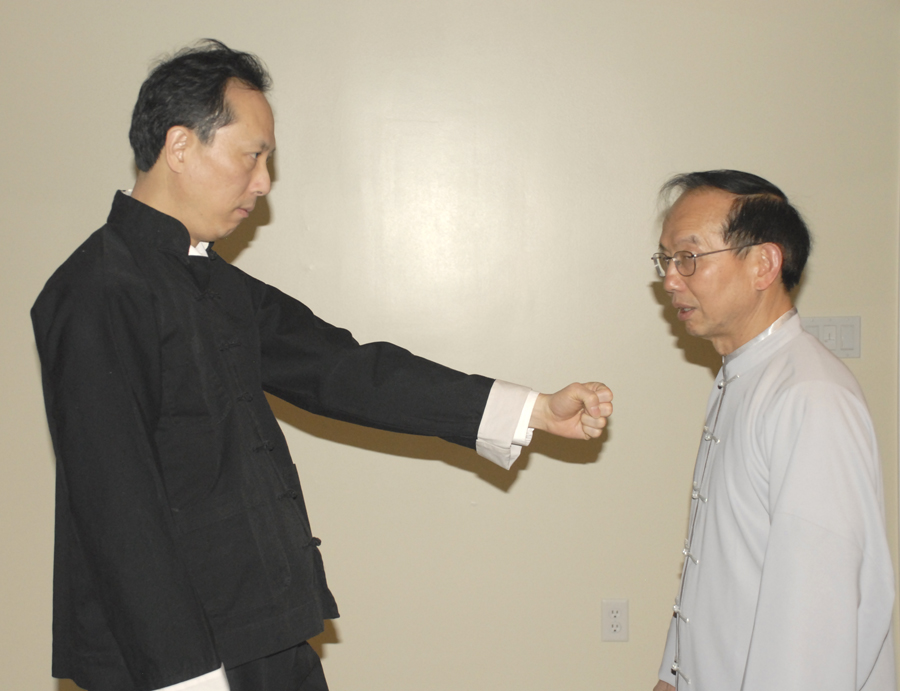 |
2. B blocks punch waving right hand from above in a counter-clockwise direction (1st of 2 photos) |
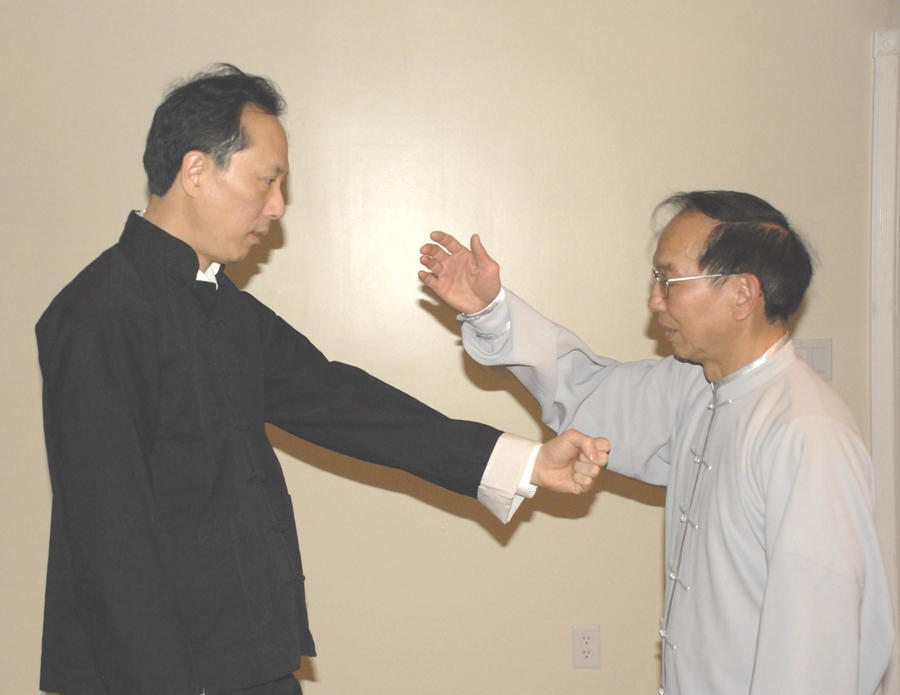 |
| 3. B blocks punch waving right hand from above in a counter-clockwise direction (2nd of 2 photos) |
 |
|
|
Application B: Blocking Punch from Below
| 1. Person A tries to attack B with a punch using his left fist |
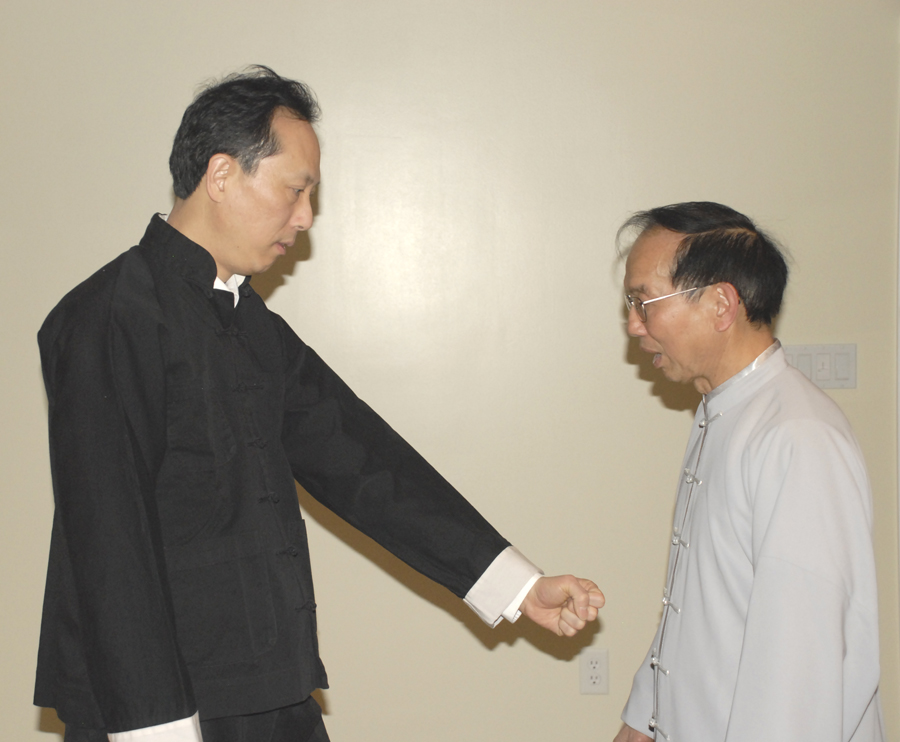 |
2. B blocks punch waving right hand from below in a clockwise direction |
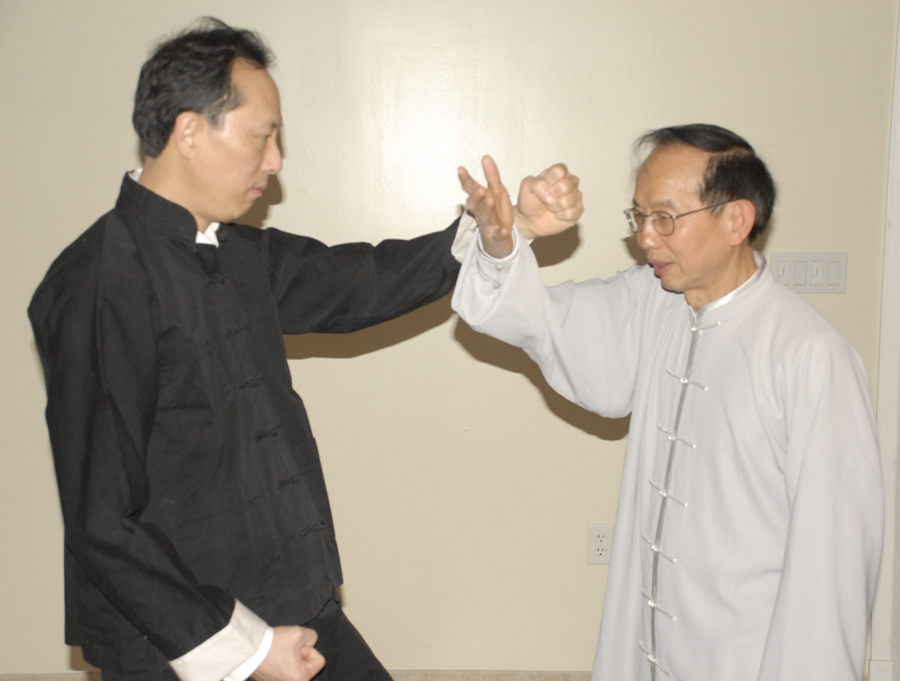 |
Application C: Blocking Kick from Below
| 1. Person A tries to attack B with a front kick |
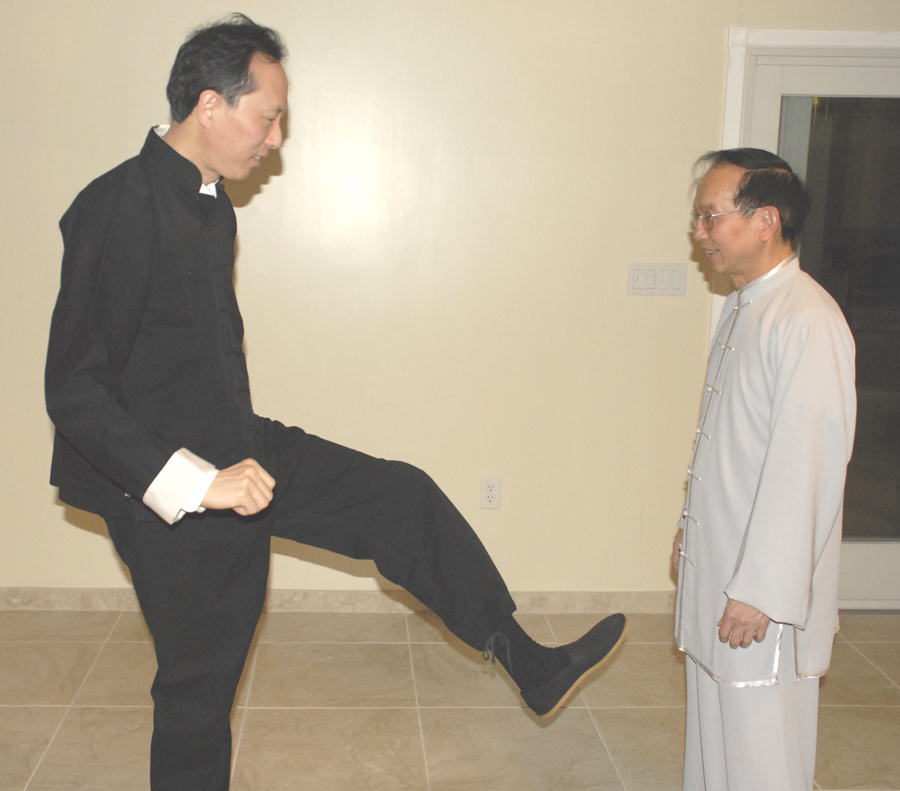 |
2. B blocks kick waving right hand from below in a clockwise direction |
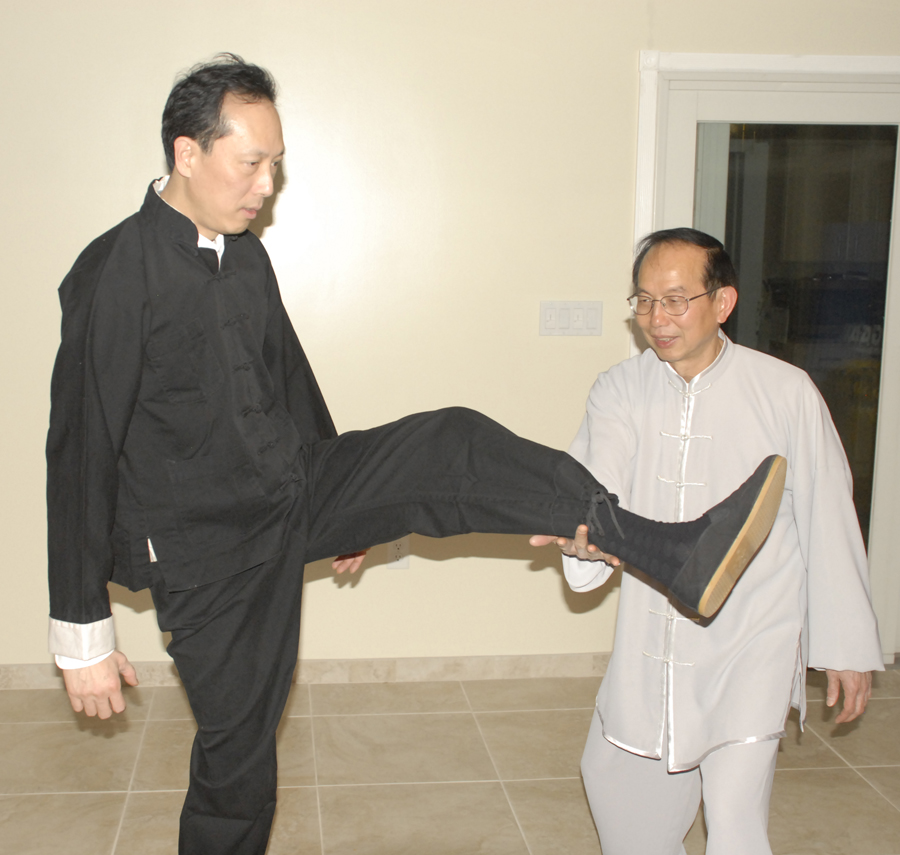 |
Push Down and Stand on One Leg
Application A:
| 1. Person A tries to punch B’s head with his right fist |
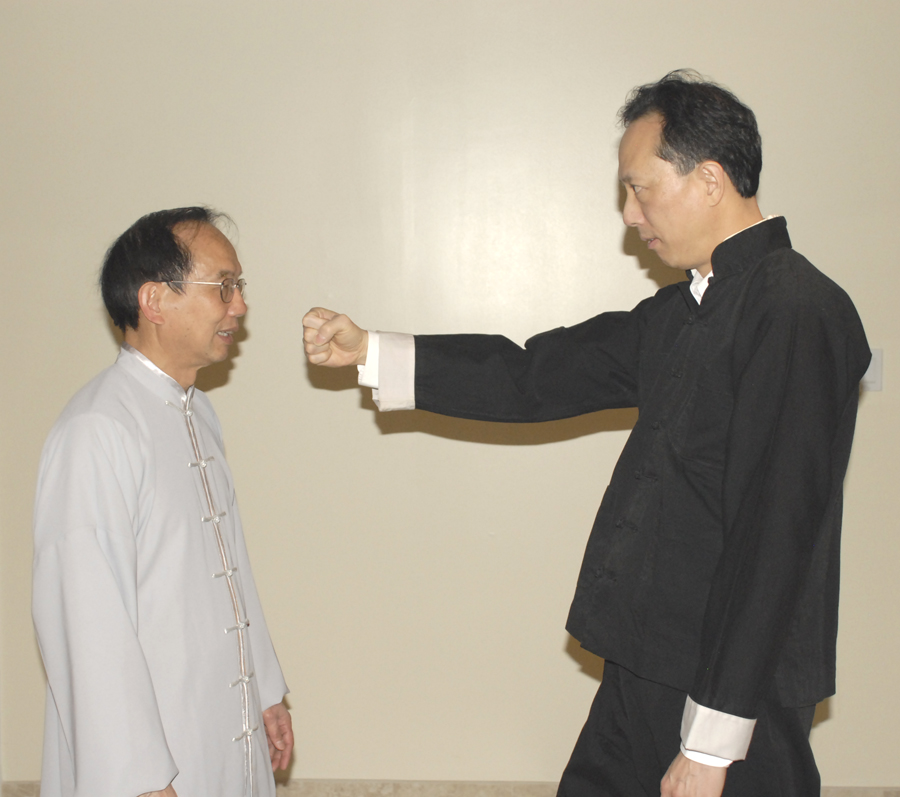 |
2. B raises right hand to block punch and then turns his right hand to grasp A’s right wrist, and turns body slightly to right |
 |
| 3. While pulling down on A’s right wrist, B bends down and extends his left arm toward A’s left leg hitting A’s groin on the way |
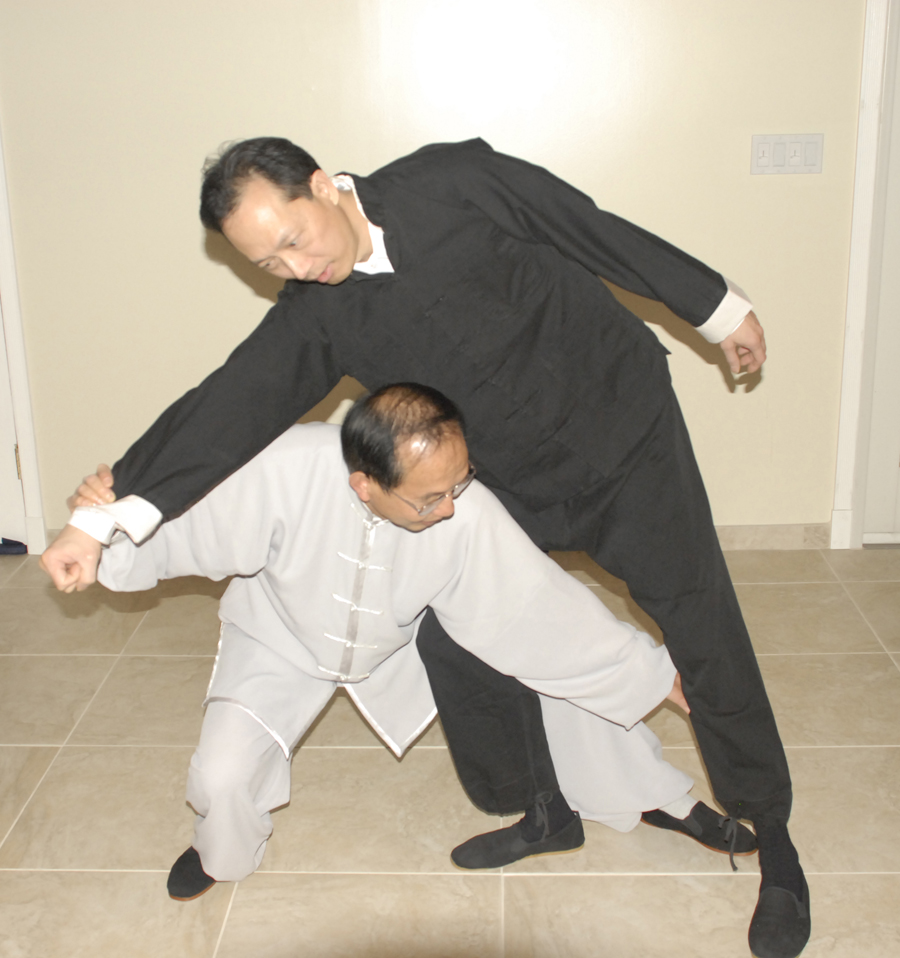 |
4. After grasping A’s left leg with his left hand, A shifts his weight from his right foot to his left foot, and at the same time raises his left hand while standing up and uses his left arm to press A’s body backward. The end result is that A’s right wrist is being pulled downward, his left leg is being pulled upward, and his body is being pressed backward. This leads to a very unbalanced position for A and he falls backwards. |
 |
Application B:
| 1. Person A tries to punch B’s head with his right fist. |
 |
2. B raises right hand to block punch and then turns his right hand to grasp A’s right wrist |
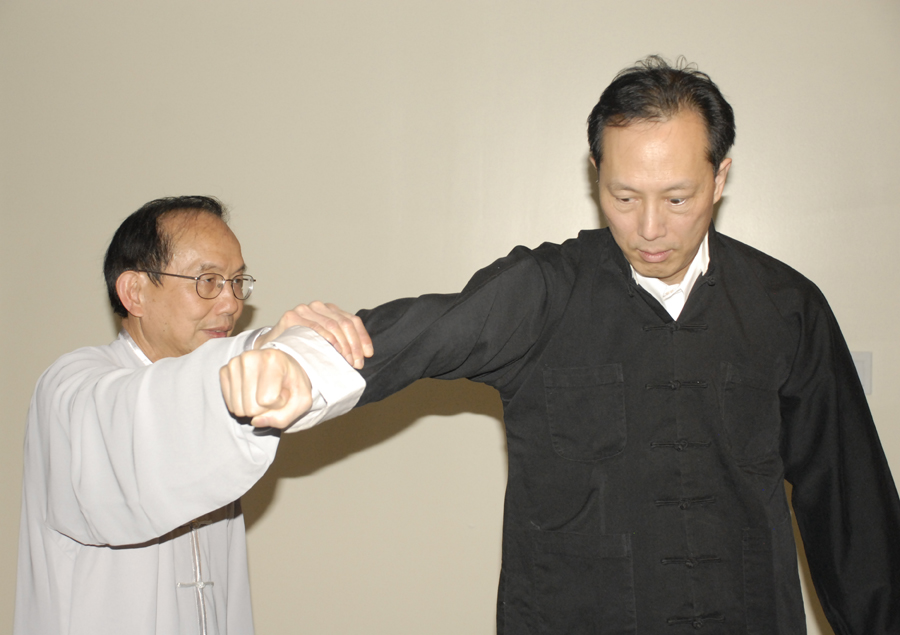 |
| 3. B steps forward with his left foot, and raises his right knee to hit A’s right rib cage |
(no photo – to be provided in the future) |
|
|
Picking Up Needle from Bottom of Ocean
| 1. Person A tries to punch B’s head with his right fist |
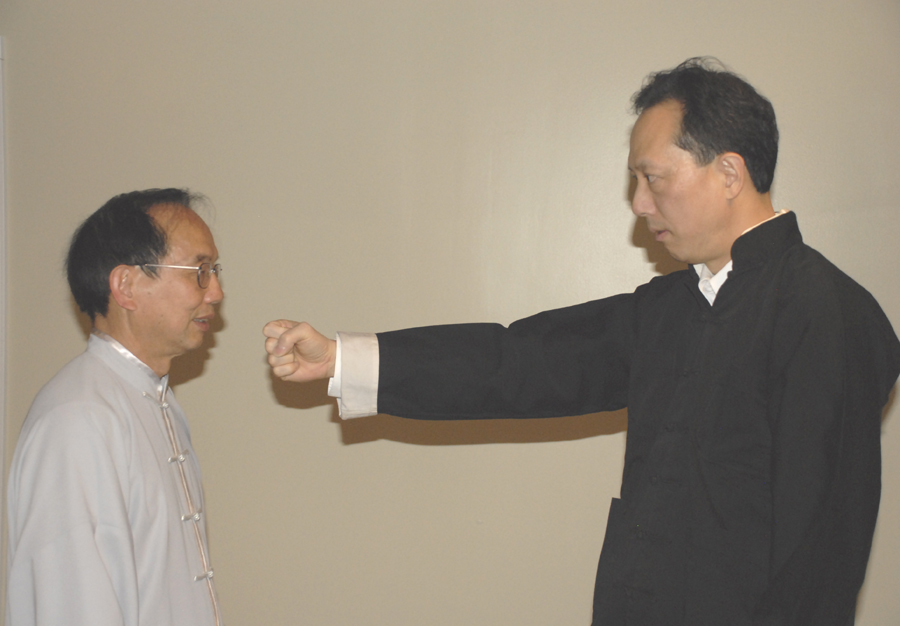 |
2. B raises his right hand to block punch and then turns his right hand to grasp A’s right wrist |
 |
| 3. B presses his left hand downward on the back of A’s upper right arm (or just below A’s right shoulder), thus dropping A to the floor |
 |
|
|
I want to thank Albert Chan and Henry Hom for collaborating on this project. Albert was the other performer in the photos, and Henry was the photographer.





































I enjoy reading your articles in the website. “Martial Applications of Taijiquan” is excellent, much better than any books I have read on this subject. Thank you for sharing your knowledge with us. Keep up with the good works.
Exellent explanation both text and the photos. One can almost see the energy you used when doing the techniqus in the photos. And the techniques make sense contrary to some explanations in other sources (books, web sites). I also liked your Qin Na article. It is hard to find such a good source about martial art applications in taiji because everybody thinks it is just a health exercise.
I learn Traditional long form of Yang style and it would be great to see the self defence applications of the techniques used there and even different applications of one posture. But I know it is too difficult and time demanding to make an article about it.
Thank you so much. Please keep writing these great articles. All the best, Lada
Thank you for your great supports.